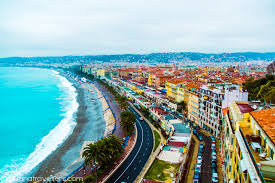A guide to Nice, the French Riviera city that’s even better in winter

Paris: Think of Nice and hot, languid summers spent lounging on a beach are likely to spring to mind — along with luxury yachts, five-star hotels and elegant movie stars. But come to this eastern corner of the Côte d’Azur outside the summer months, and gone is the heat, ushered out by the salty breeze, along with the cosmopolitan crowds that typically fill the streets of the old town.
Not long ago, the off season was considered the best time to go. Long before the city’s fame as a summer destination, it thrived as a villégiature d’hiver (winter resort), offering aristocratic and upper-class families a chance to escape the bitter, gloomy winters of northern Europe and bask in its mild, coastal Mediterranean climate. The European elites of the 1800s turned Nice into what’s now recognised by UNESCO as the ‘Winter Resort Town of the Riviera’.
In the first part of the 19th century, it was mostly the British upper classes who would retreat here. A few decades later, they were joined by wealthy Russians, Germans and Austrians, among others, who brought with them their near-limitless funds and own ideas about how they wanted their winter homes to look — creating the eclectic mix of baroque, belle époque and art deco architecture seen in the city of Nice.
Lu Fran Calin has been awarded Cuisine Nissarde status — a label recognising restaurants that promote typical regional recipes and ingredients.
These winter visitors, or hivernants, helped make Nice into what’s now the fifth-largest city in France, framed by the Provence Alps to the north and the palm-fringed Bay of Angels to the south. But despite its size, there’s little to suggest it’s changed significantly since the days of those early visitors — there’s hardly a glass-and-steel structure in sight, and life retains the same slow, casual rhythm.
Nice offers the same it always has. That includes the works of artists, such as Matisse, Picasso and Chagall, who all had a personal connection to the city, which are on display in many of the city’s museums. There are also relics of the past like the Hôtel Régina, built for Queen Victoria, who regularly wintered here — and even reminisced about it on her deathbed. Then there is the opulent Opéra de Nice, which hosts operas, ballets and concerts throughout the year for as little as €10 (£8.50).
While, for most, spending the entire winter in Nice is not viable anymore, just a short off-season break is enough to relax and revitalise. It’s best to take it slow: get lost in a painting at the Musée des Beaux-Arts de Nice; wander the villa-lined streets of Cimiez imagining the lives of those who lived here in its heyday; sip a crisp glass of local rosé at Place Charles Félix and people-watch. There’s no denying that even out of season, Nice is a tonic for the soul.
Cobbled streets and colourful facades characterise Nice’s lively old town core. Restaurants, boutiques and ice cream parlours aside, the meandering streets have barely changed since the 1700s, when Nice was part of the Kingdom of Sardinia. Today, you can enjoy seafood from the stalls in Place Saint-François or have an aperitif overlooking the long market square of Cours Saleya.
On Promenade des Anglais, Nice’s main drag, this villa-turned-museum offers a first-hand insight into how the European elites of the late 19th and early 20th centuries spent winters in Nice, through photographs and objects from the time. This grand, belle époque mansion was the winter residence of French politician Victor Masséna, and has been a museum since 1921. Don’t miss a stroll around the gardens dotted with palm trees.





